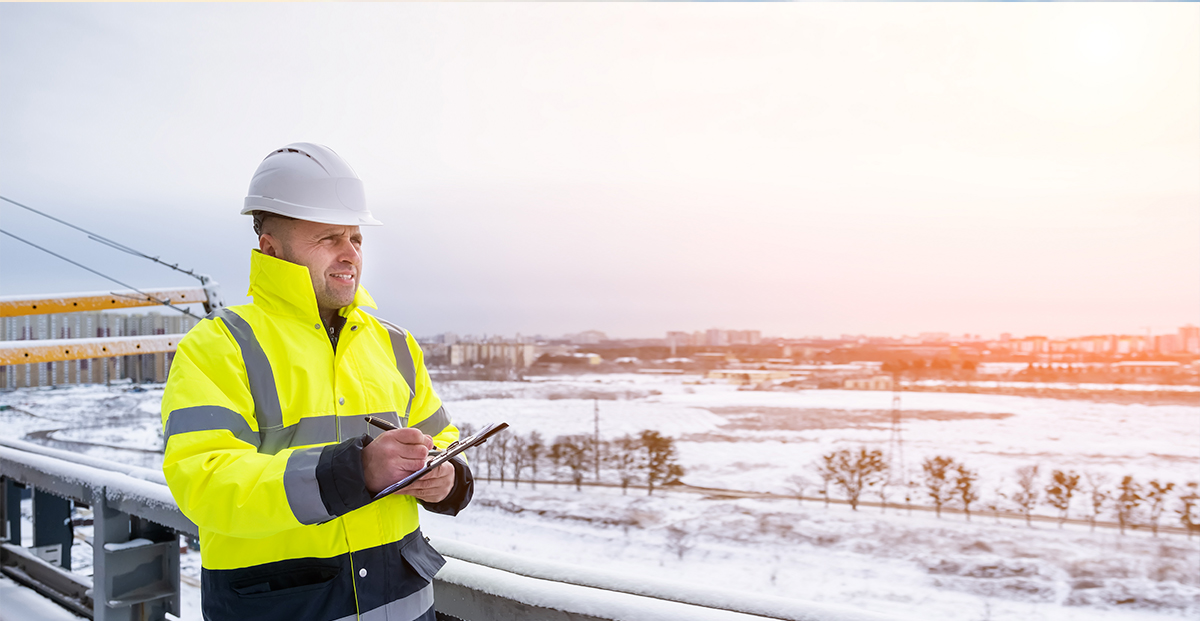Commercial roofs are the most vulnerable and also the most important part of any commercial building. Although the commercial roof plays a vital role in insulating the building and situating building infrastructure, it’s also surprisingly delicate. It can be damaged by high winds, debris, or even something as small as an errant footstep. What’s more, damage tends to become ramified. A pinhole in the membrane turns into a leak, which turns into rot, and suddenly your have to replace a roof beam.
For this reason, your roof needs constant inspection, care, and maintenance—otherwise it will never last out its designed lifespan. Not only does the roof need general maintenance year-round, it also needs season-specific maintenance designed to mitigate damage from thunderstorms, tornados, hurricanes, snowstorms, and more.
Begin with a Thorough Inspection
Let’s assume that you’ve just inherited your commercial roof—it’s your first day as a facility manager at a building that’s completely new to you. Where should you begin?
Every maintenance plan should begin with an inspection, which should go something like this:
- Step One: Look at blueprints. Familiarize yourself with the kind of material that comprises your roof and understand how old it is. Different roofing materials will show various signs of wear at different times. In addition, you should understand how the roof membrane is fastened to the roof edge, where there are penetrations and flashings, and where you might find odd architectural details that may be more fragile.
- Step Two: Go to the roof (ensuring that you take safety precautions). Check the condition of all penetrations, flashings, and roof edges. Understand if there are any areas where your roof differs from the existing architectural plans, as these may be problem areas. Lastly, is the roof in better or worse condition than its age would suggest?
- Step Three: Continue inspection. Look for cracks or tears in the roof membrane, ponding water, accumulations of debris, and any damage to rooftop equipment. These are your first priorities.
- Step Four: Clear gutters, add drainage, or adjust roof pitch to remove ponding water. Clear any existing debris. Patch any cracks or tears. Reseal the roof membrane if it has separated from the roof edge or any penetrations. Repair any broken or damaged rooftop equipment.
- Step Five: Create a regular inspection schedule to mitigate the issues above or prevent them from recurring.
Conducting the steps above will essentially freeze your roof in time If it’s in good to fair condition, your roof will probably live out its designed lifespan without needing a premature replacement. (For more information on how to make this calculus, read our blog [LINK TBD] on how to know whether to repair or replace your commercial roof). Barring major damage due to severe and unexpected weather events, your roof should continue to last for years.
Creating a Seasonal Maintenance Plan
Seasons vary widely in the continental U.S., so your seasonal maintenance plan will need to be tailored to wherever you’re located. Essentially, you need to understand when extreme weather occurs in your climate, and then start preparing the season before. On the Gulf Coast, for example, you have to worry about hurricane season.
You can start preparing your roof for hurricane season in the early spring, typically by making sure that your rooftop equipment is held down tightly, making sure that your roof meets local building codes for wind resistance, and by replacing any torn membrane that might blow off. After a storm, you should remove ponding water, clear windblown debris, clean the gutters, and look for any new cracks or tears.
Meanwhile, your preparations in a region with cold winters would be very different. Here, insulation will be a huge priority as you try to keep your building warm and resist damage due to thermal cycling. Try to replace any crushed or damaged insulation panels before the winter and inspect the load-bearing elements of your roof to prevent a collapse. After a storm, plow the roof or shovel it to avoid placing continuous stress on your roof beams.
PHP Systems/Design offers rooftop walkways and equipment supports that make the roof safer, more navigable and easier to maintain. From an elevated walkway, you’ll be able to see your rooftop without walking on it—which can damage the roof surface. In addition, walkways, railings, and crossovers make it easier to reach and repair equipment without subjecting maintenance workers to hazards. Together, all of these additions will help make your rooftop safer and easier to maintain.



